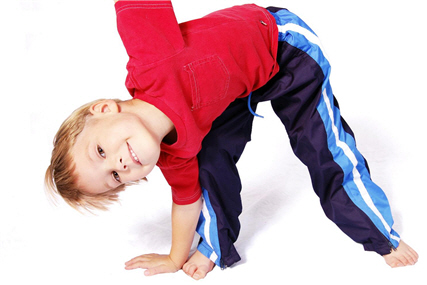TPR Tricks: 5 Fabulous Ways to Use Total Physical Response in the ESL Classroom


Then, you have been faced with tactile-kinesthetic learners, the kind of student who needs to do things and use their whole body to learn.


The use of realia, or real life objects that you bring into the classroom, is the ideal strategy for tactile-kinesthetic learners. Plastic fruits and vegetables are a lot better than flashcards. Real clothes or costumes are better than illustrations. For instance, bring a toy tea set to teach asking for/offering drinks.
Tactile learners are great with their hands. They have the ability to create masterpieces in watercolors, or build anything out of clay or blocks. Put those crafty little hands to good use, particularly during the holidays and let them enjoy fall, spring, Easter, Halloween, Thanksgiving or Christmas crafts.
Science experiments are ideal for tactile learners – but how do you introduce science experiments in an ESL classroom? Easy! Students may experiment with the speed at which ice melts. Plant seeds with them – you will see that a lot more than a garden will grow in your classroom. And how about some simple color mixing with your youngest learners? They will have loads of fun finding out how to make their favorites out of just the basic primary colors. And for more ideas visit TryScience.org.
Amaze your tactile learners with some simple magic tricks! Teach them how to make invisible ink. Here are some easy magic tricks that you can learn and teach your students. You can use them to fit into your lesson plan or as an added bonus for good behavior at the end of class.
Most young learners enjoy singing, but tactile-kinesthetic learners will love songs with movement. It can be as simple as having them hold hands and go round and round as they sing. Or have them sing songs where they mime the actions, like Wheels on the Bus or Head, Shoulders, Knees and Toes.
Charades is a classic game and an excellent choice for tactile-kinesthetic learners. Moreover, it is a very versatile game that you can adapt to suit your language teaching needs. For example, you can play charades to practice animals, sports or even musical instruments.
Another classic game for tactile-kinesthetic learners, it is also best if you put a spin on it. Instead of having them just “touch your nose”, have Simon ask them to carry out more challenging tasks: “Simon says take your student book and balance it on your head.”
Tactile-kinesthetic learners are great at “doing”, so the best way to teach action verbs and their imperative form to these active learners is by doing the actions. Don’t be afraid to open and close windows and doors, take items and put them in different places, or dance, skip or jump. Then, use the imperative form to tell students to carry out these actions themselves, and finally have them tell others.
Tactile-kinesthetic learners love playing games like any child, but they will thrive in those with plenty of action. Prefer games where they have to race to the whiteboard to those where they have to only move pieces across a board. Choose games where they shoot baskets instead of those where they have to sit.

There are certain resources or strategies that will not work well with tactile-kinesthetic learners. These are mainly:
Notice that the recommendation is to avoid “extended” periods of reading, writing or listening. Of course, even your most energetic, restless, tactile learners will need to practice these essential skills. Your best course of action is to alternate a quiet period of reading or writing with a more active game or TPR activity.
Tactile learners will wear you out! But rest assured, they are such a happy bunch, so full of energy and enthusiasm, that you will have as much fun as they will!